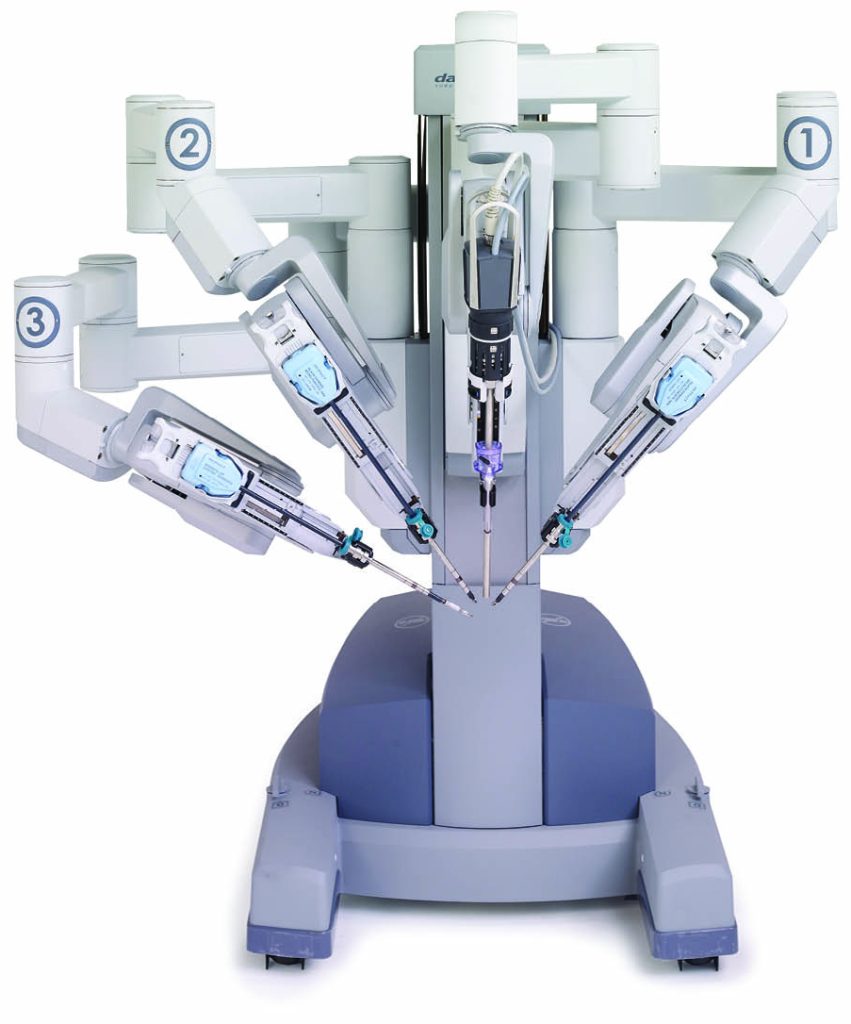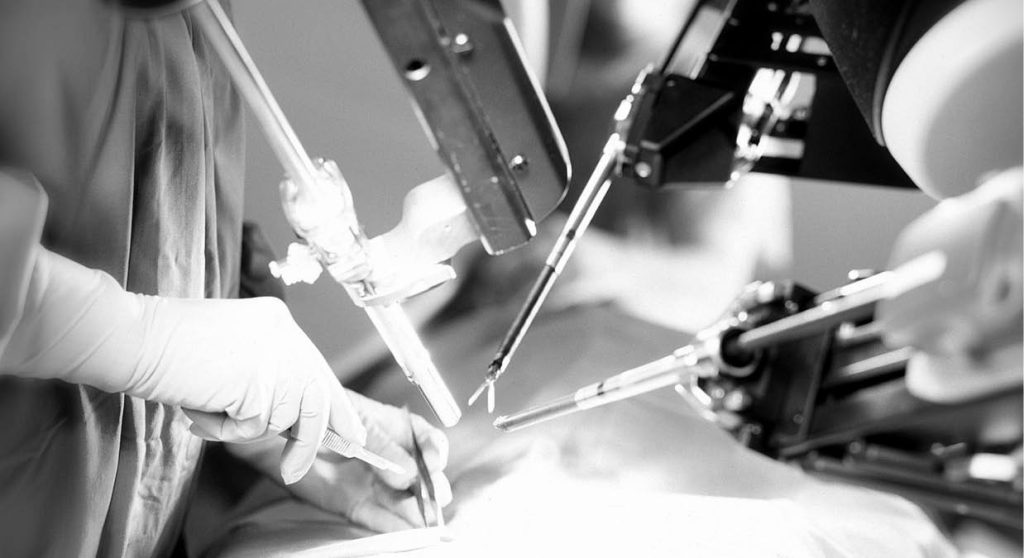 Robotic tech making surgeons more than merely human
Robotic tech making surgeons more than merely human
100 years ago, surgeons still performed procedures with their bare hands, working in their street clothes, protected by an apron. The tools they used were not much better. Just a glimpse of vintage surgical equipment will send shivers up your spine. Thankfully, we live in the 21st century!
While we’re not to the point where doctors can operate by waving a device over the body like they do in Star Trek, traditional open surgery is being replaced with minimally invasive procedures. Moreover, a growing number of minimally invasive surgeries are performed with the assistance of robotic surgical technology, such as the groundbreaking da Vinci Surgical System.
A New Era in Surgery
Contemporary minimally invasive surgery began in 1987 with the first laparoscopic gallbladder removal. Along with the patient benefits of this new surgical method came challenges for surgeons working with tiny instruments through small incisions, as well as a limited field of vision. A prototype for a robotic surgery system developed in the late 1980s provided an answer. The former Stanford Research Institute, under contract to the U.S. Army, started developing a system for remotely performing battlefield surgery.
It didn’t take long for visionaries to have an “Aha!” moment. Could minimally invasive surgery benefit from a robotic system that mimics the surgeon’s movements while providing greater precision, superior visualization, and enhanced dexterity? In 1995, Intuitive Surgical, Inc. was founded to test this theory. In 2000, the company’s da Vinci Surgical System became the first robotic surgery technology cleared by the FDA for general laparoscopic surgery. Today, over 1.5 million successful surgeries have been performed worldwide with the da Vinci System.
“Scarless” Robotic Surgery
Robotic-assisted surgery is performed through tiny “keyhole” incisions, similar to traditional laparoscopy. With the da Vinci Sp Single Port Robotic Surgical System receiving FDA clearance, now surgeons can operate using the technology through one small incision in the patient’s umbilicus (belly button). The end result is virtually scarless. Single-site procedures include urologic surgery such as prostate removal, gallbladder removal, and hysterectomy.
 How Robotic-Assisted Surgery Works
How Robotic-Assisted Surgery Works
The da Vinci Surgical System allows the surgeon—who sits at a control console located a few feet away from the patient—to conduct minimally invasive surgery through tiny incisions with extraordinary control and range of motion. His or her hand movements are translated into smaller, precise movements of miniature instruments mounted on robotic arms. The system further increases precision by filtering random hand tremors. One of the instruments is a laparoscope—a thin tube with a tiny camera and light at the end. The surgeon “sees” via high-resolution 3D images the camera transmits to a video monitor in the operating room. Magnification is 10 to 15 times that of the naked eye.
Since the da Vinci System was introduced in 2000, the types of surgery performed with the technology continue to grow. They include urologic, gastrointestinal, gynecologic, digestive, oncologic, lung, transoral, and general surgery such as gallbladder removal and hernia repair.
Some surgeons agree that robotic-assisted surgery has made certain operations, such as radical prostatectomy (prostate removal), even easier to perform using minimally invasive techniques. Due to greater precision than traditional laparoscopic surgery, they maintain malignant tissue can be removed with more efficiency and ease, thereby reducing the likelihood of relapse due to missed cancerous tissue.
Advantages of Robotic-Assisted Surgery vs. Traditional Open Surgery
- Reduced blood loss, which reduces the chance of needing a transfusion.
- Smaller incisions, which can reduce pain and shorten recovery time, as well as result in less post-operative scarring.
- Less pain, leading to less pain medication needed.
- Shorter hospital stay, often with a same day discharge, which leads to a faster return to everyday living.
- Reduced exposure of internal organs to possible external contaminants thereby reducing the risk of acquiring infections.
Source: NCBI.NLM.NIH.gov
Is Robotic-Assisted Surgery Right for You?
Robotic surgery isn’t an option for everyone, according to MayoClinic.com. Talk with your doctor about the benefits and risks of robotic surgery, and how it compares with other techniques, such as other types of minimally invasive surgery and conventional open surgery.
By Annette Brooks
Photos courtesy of Intuitive Surgical










